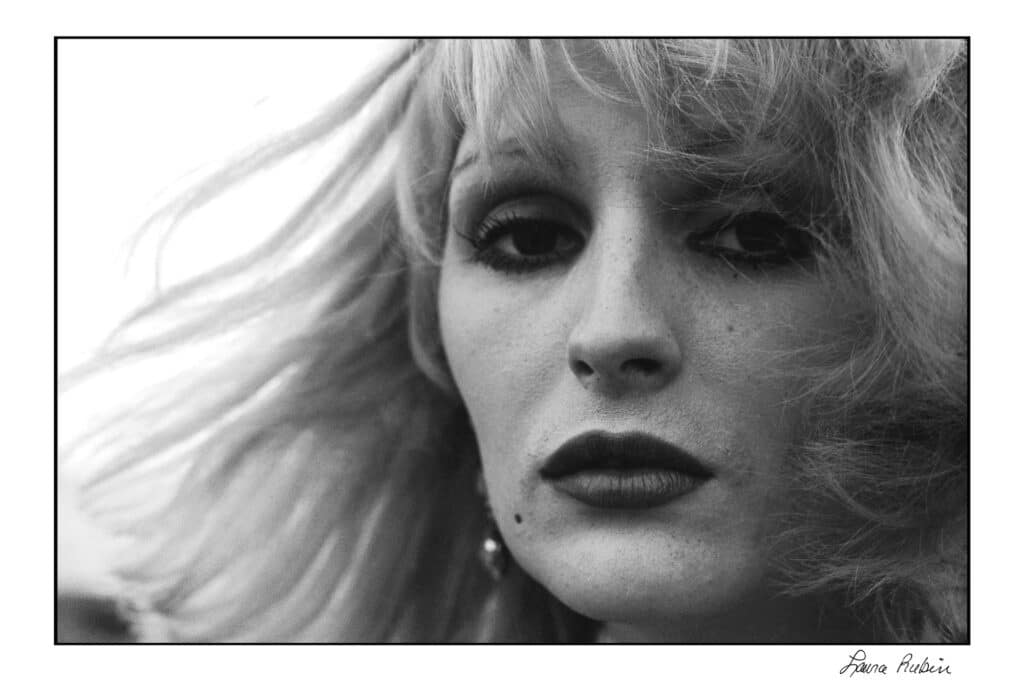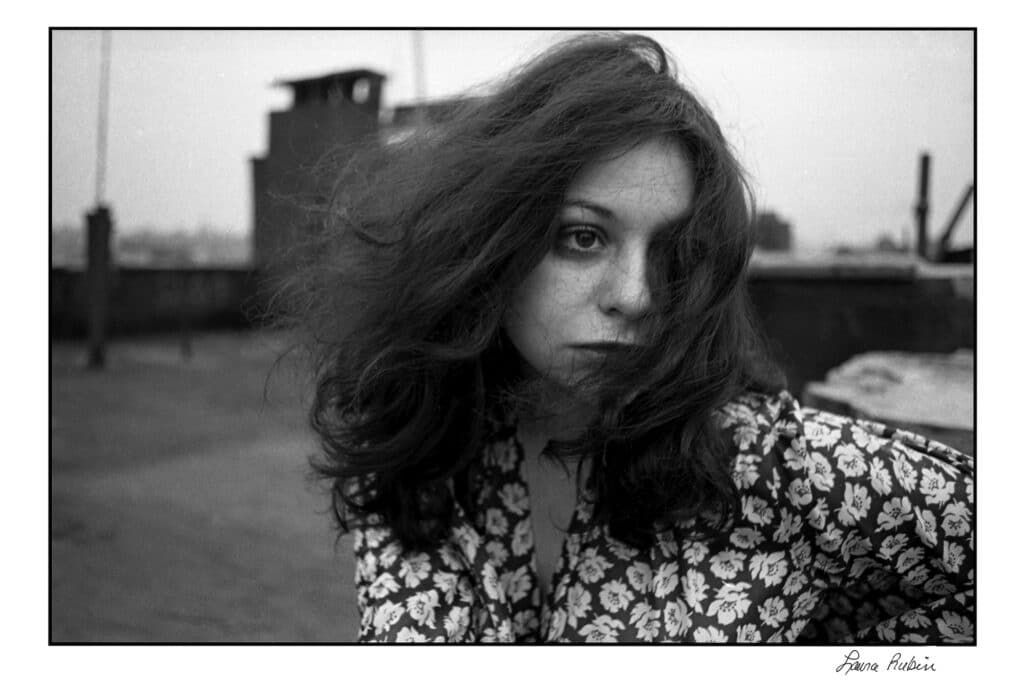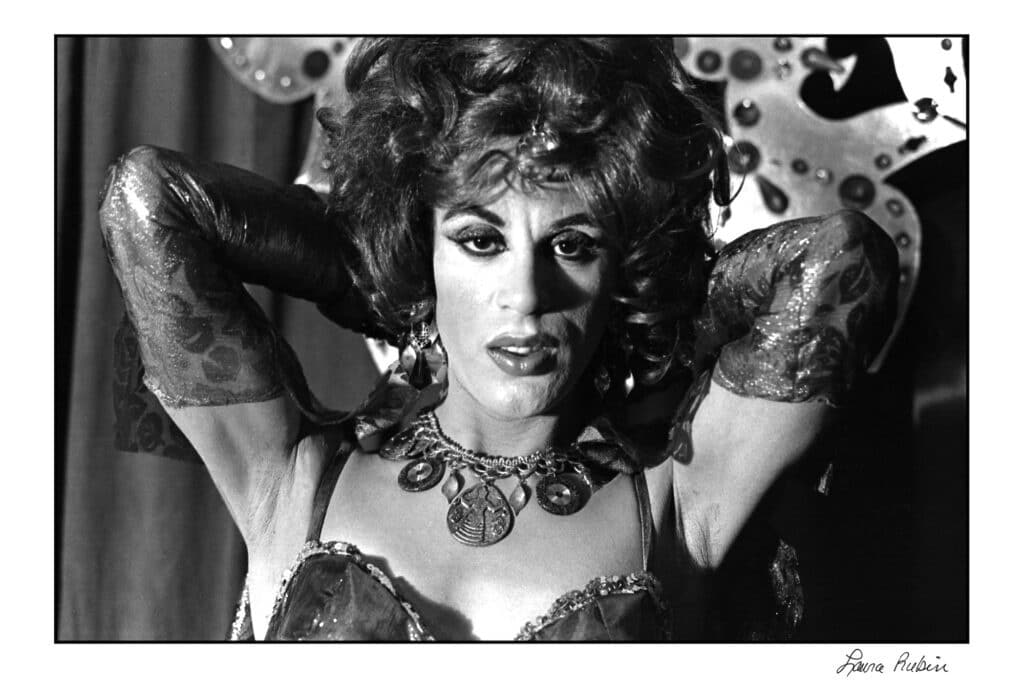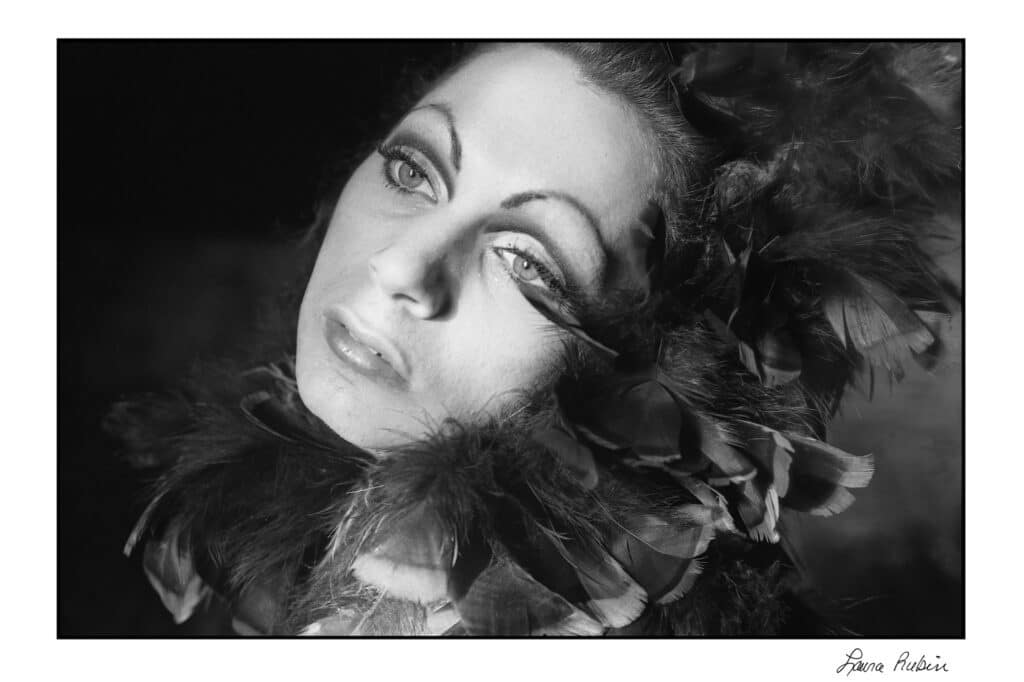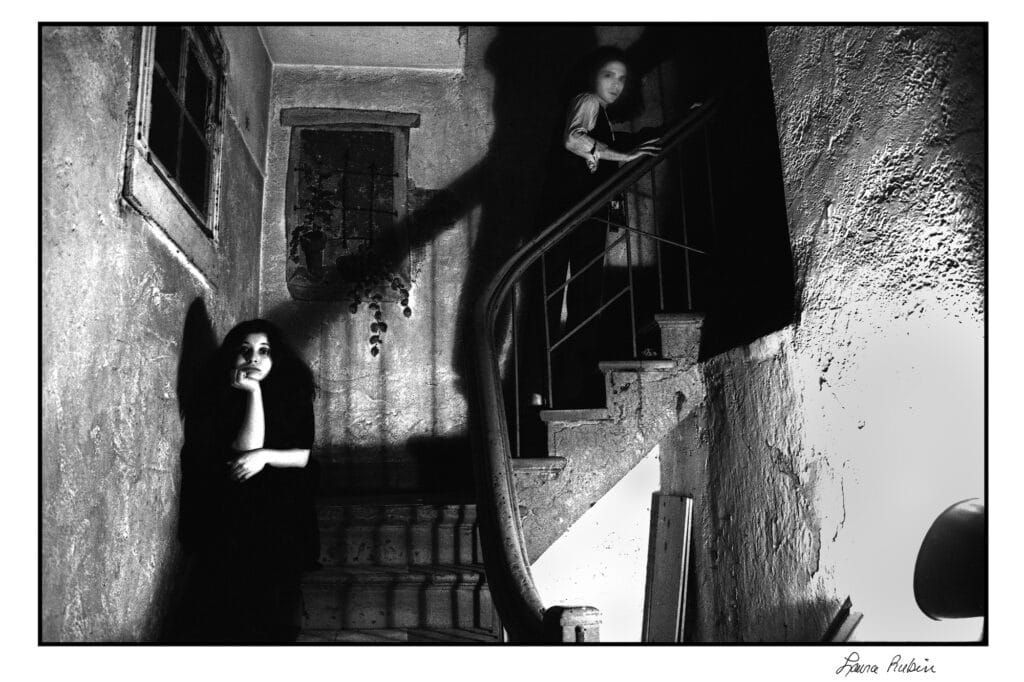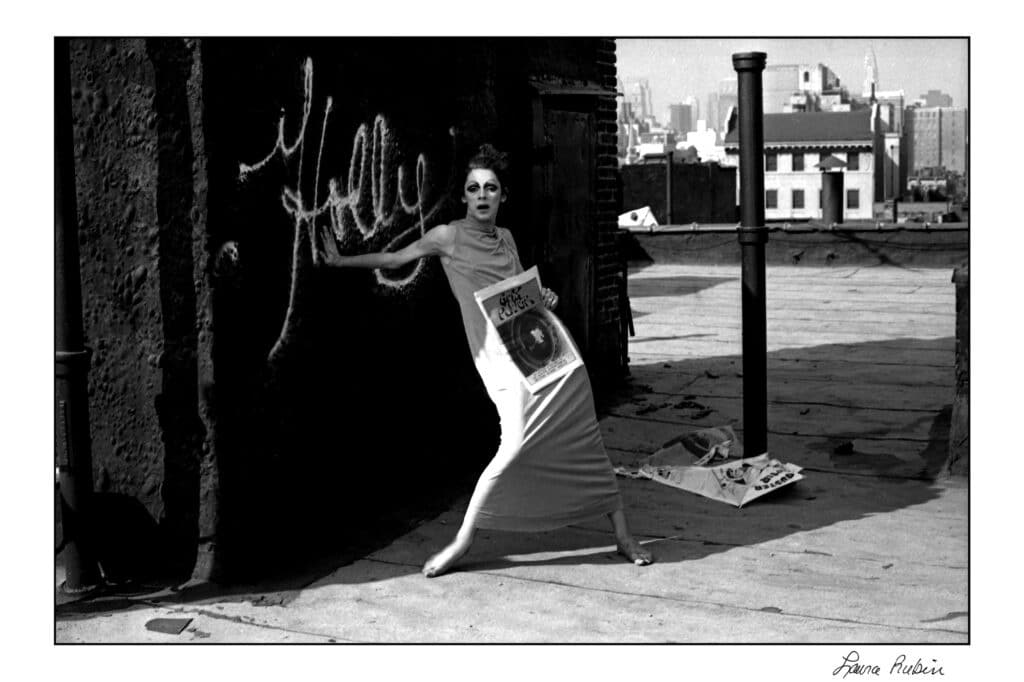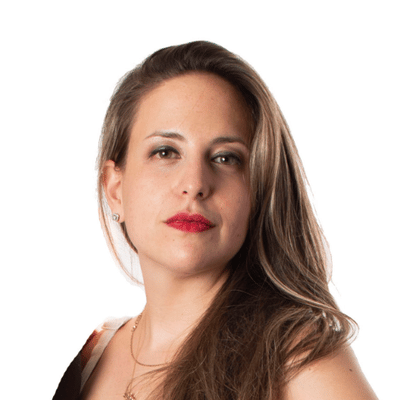“The thing is that with a lot of these people, nobody else had ever photographed them. Nobody had ever wanted to”
Penny Arcade
Penny Arcade, the legendary New York performance artist, was first photographed by the artist Laura Rubin in the 1960s. Rubin, whose work is in the collections of The Andy Warhol Museum in Pittsburgh, Pennsylvania and The Jewish Museum in New York and has been exhibited at the Guggenheim, was among those at the forefront of an interest in underground culture that has since become part of the fabric of modern existence. But in the 1960s, it was still fringe, a product of outsiders, a group of young people making art work on their own terms and unconcerned with fitting into mainstream culture. Not that the mainstream would have been ready for them just the same.
Laura Rubin had been a street photographer living on the Lower East Side in the 1960s when she accidentally stumbled into La MaMa Experimental Theatre Club, a now historic home of avant-garde theatre in the East Village. There, she encountered Penny, before the performer had appeared in Warhol’s films, and Mario Montez, already a Warhol star and famed for his work in drag, and she set up time to photograph them later. Penny was first and her avant-garde circle followed: Candy Darling, Andrea “Whips” Feldman, Holly Woodlawn. “[Rubin] was really, along with Peter Hujar and Leee Black Childers, one of the very first people who photographed nonbinary people with dignity,” Arcade says.
Hujar is etched into our cultural memory for his elegant portraiture of New York’s downtown and queer nightlife denizens, thanks largely to his active archive and galleries representing his work. Childers, before he passed in 2014, was an assistant to Andy Warhol and published and exhibited his own work around the world.
“I had a magical relationship with my photographic subjects”
But Laura Rubin remains largely unknown. Arcade has helped, however. Five years ago, Rubin was in dire need and living in Guadalajara, Mexico–she had moved there some 20 years earlier to take care of her ailing family. Rubin reached out after seeing how Arcade had raised funds for Holly Woodlawn’s care before her passing. With multiple medical complications preventing her from working and without savings or Social Security, Rubin needed help paying her bills every month and had nobody else to call. So Arcade stepped in. “She simply had no way to pay her bills. That ‘simply’ means food and a roof over her head and medications,” Arcade says. So every month for the last five years, Arcade has been raising money for Rubin to live on via GoFundMe. She has since raised almost $100,000, and the journey continues today to get Laura the care she needs.
To help support funding, Arcade has been selling Rubin’s prints on her behalf. After understanding Rubin’s situation, The Andy Warhol Museum was kind enough to allow them to use scans of negatives Rubin had initially donated to make the prints, which are now available for purchase for $200 if mailed in the US and $250 if sent internationally. Because of the exposure of the GoFundMe over the years, Rubin’s work has appeared on American Horror Story, in Martin Scorsese’s documentary Personality Crisis about the musician David Johansen, and in writer Cynthia Carr’s biography of Candy Darling, Candy Darling: Dreamer, Icon, Superstar, forthcoming in March 2024.
And the prints of Rubin’s black and white images are stunning. Commissioned by Arcade and longtime artistic collaborator Steve Zehentner, the images are printed in black and white here in New York by a master printer and invite the viewer into a moment in the lives of not just iconic downtown artists like Darling and Woodlawn, but of Rubin herself. “The best photos are spontaneous,” Rubin says. “I had a magical relationship with my photographic subjects, we were of the same mind.”
Candy Darling’s blonde locks float in a beach breeze. Holly Woodlawn is aflutter with feathers and dramatically drawn Marlene Dietrich-style eyebrows. Mario Montez is a bejeweled goddess under a curling dark wig. Penny is a vision of swirling dark hair, dark eyes, and pouty lips.
And Rubin’s tales of how the images came to be are just as vibrant as the images: “Candy Darling was formally introduced to me by [filmmaker] Jeremiah Newton. He wanted photos of her, though I was interested in him,” she said. “We went to the beach and worked with several outfits. She changed in a deli, which turned heads! A blond starlet walking out of the restroom in a full length glitter evening gown.”
“I met Holly Woodlawn at Max’s Kansas City in 1970. She loved the photos of Mario. We were downtown neighbors and used her roof as the location,” Rubin said. “There happened to be a can of spray paint, she wrote her signature across the wall, held a copy of [periodical] ‘Gay Power’ as a prop.”
“Drag queens were a deal breaker, even if most photos were just downtown artists. No book publisher would allow the work, forbidden”
Laura Rubin
“Mario allowed me to photograph the entire process of transformation from a man to a woman,” she wrote in an email, a time when this was rarely done. Gallerists and magazines didn’t want images like that, either. “Drag queens were a deal breaker, even if most photos were just downtown artists. No book publisher would allow the work, forbidden,” she said.
Cultural history
Rubin’s images, sold through Arcade’s GoFundMe, support Rubin staying in her home with access to food and medication. The money goes directly to her. Her health remains in decline, meaning her medical needs have increased significantly. “What she told me was, she wanted to die in her own bed,” Arcade says. “I thought that that was a reasonable request.” The print sales help, though so do donations of any kind.
“There’s a lot of interest in her prints because her population that she’s photographing was really authentic,” Arcade says, making Rubin’s work at once art and historical artifact. “If you want to look at the ‘80s you would think that the only artists who were working were David Wojoronwicz and a handful of other people. It doesn’t show the real breadth of who’s working. And that’s how it is with the 60s and especially around the Warhol scene. So I think that not only is it beautiful photographic work, but it’s a cultural history that is very much at risk.”
Donate to Laura Rubin’s care and purchase prints via Penny Arcade’s GoFundMe here.
